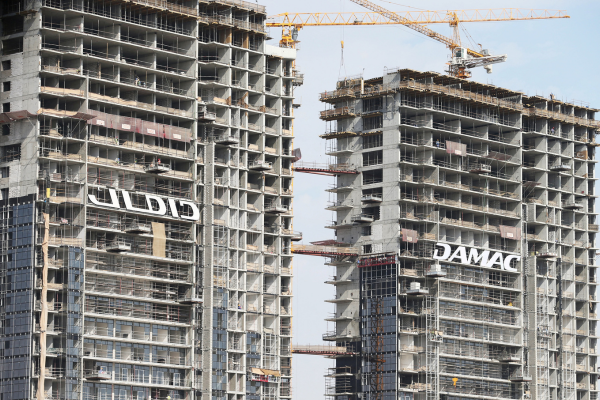Plugging the data centre talent gap

Mark Fenton at Cadence argues that there are three technologies - digital twins, augmented reality and virtual reality - that will help to moderate the skills shortage in data centres
The technology industry has a talent shortage, and it’s becoming widespread. Now, shortages are creeping into the data centre sector. A survey by the Uptime Institute shows that more than half (53%) of operators report having difficulties finding qualified talent, a 15% rise since 2018.
At the same time, the industry is grappling with increasing demands for capacity in more markets, as well as introducing more complex technologies, such as liquid cooling and AI.
However, with operators struggling to plug the talent gaps, their ability to meet this rising demand, and run data centres at maximum effectiveness, could become compromised. After all, with a lack of talent, there is only so much growth possible before organisations hit a brick wall. There needs to be a solution, and fast.
Thankfully, there are tools and technology, such as digital twins, augmented reality (AR), and virtual reality (VR) that can help combat these challenges. Before jumping into resolving them, operators must first completely understand the root cause of the skills problem.
Rising technical complexity
The skills shortage is being driven by two interlinking factors. Firstly, the changing nature of innovative technologies in use across data centres. Secondly, the lack of talent entering the sector.
In the past, the technology deployed across data centres was considered easy to manage and low risk. Power densities were low and data centres over-engineered. Many operators overcompensated on cooling or air, meaning there was no chance of overheating or undersupplying air—both of which reduce risk. Now everything has become more complicated.
In today’s data centres, over-cooling as a precaution is no longer an option due to energy costs and environmental considerations. Specialists are needed across many different areas to oversee the physical hardware, coolants, refrigerants, and supply of power and cooling.
What’s more, there are certain pieces of hardware or software that only certain people are permitted to operate, or only the vendor is qualified to. Then there are the control systems that are now connected to AI algorithms. Unless someone is an AI expert, these are out of bounds.
This complexity can be daunting both to veterans of the industry and to new joiners. This makes it difficult to recruit and retain enough people capable of understanding everything at the level required to service the data centres.
Not enough people in, too many out
Fundamentally, there’s a lack of young people entering the sector, an issue compounded by a large number exiting. JLL’s Data Centres 2023 Global Outlook found that nearly half of the workforce has more than 20 years of working experience in the sector.
As a result, a large percentage of the workforce could be approaching retirement age within the next decade. Before they leave, it will be essential for their knowledge to be transferred to younger generations, but this won’t be effective if there aren’t enough people to absorb their insight. Therefore, attracting new individuals to the data centre industry is key.
Changing the way the data centre sector is perceived will be vital. Unfortunately, it’s hidden away in the technology stack, so it doesn’t attract as many people as cyber security or software jobs might. And those who do enter the sector typically opt for hyperscalers, which can offer more compelling salaries, leaving smaller companies wanting.
Talent is in short supply and a solution is needed for both the short and the long term. Digital twins—virtual replicas of physical facilities—are part of the answer.
Leveraging the digital twin
A digital twin empowers data centre professionals to visualise and explore the challenges and opportunities that they’re facing, all within a safe, digitised model.
For a data centre low on staff or specialist skills, it’s much easier to oversee a complex estate, from plug to power distribution unit, and make updates when insight is held within a digital twin. This enables the staff that are available to fearlessly test edits, without any risk, before executing meaningful change in the real environment.
For example, a digital twin could simulate how the data centre will respond to the introduction of new equipment, such as to support a 5G deployment. It will allow the manager to determine if their current estate has enough capacity to support this and the changes required to make it possible or highlight the need for alternative options, such as building a new facility.
Demonstrating the power of data centre digital twins in training or education, such as at colleges or universities, would go a long way to show prospective entrants that it is a sector they could enjoy working in and thrive in, thus increasing the industry’s appeal. The attractiveness of the sector could be brought to life further by raising awareness of the upcoming role of AR and VR.
Harnessing AR and VR
AR glasses and VR headsets are becoming increasingly powerful and comfortable to wear. Not too far in the future, data centre managers could do a significant portion of the maintenance work required on their facilities remotely.
VR and AR wearables enable an operator to see the real physical facility environment overlaid with digital information. For example, the virtual operating manual for a server might show maintenance steps, airflow from a simulation, and physical sensor data with hot spots.
Companies will be able to provide this data to a lower-skilled employee who walks the floor. This means you can have a skilled manager remotely guiding engineers across multiple sites in a way they never could if they had to be there physically.
Some organisations are transitioning to many edge sites with specialty areas, whether providing the local compute and capacity for 5G or dealing with all that’s to come with AI. This has left companies with 100s of smaller sites that are either extremely remote or organisations don’t have the people power to support them. AR and VR headsets connected to a data centre digital twin could help to overcome this challenge.
Attract, retain and maximise impact
Digital twins, as well as AR and VR in the workplace, are all relatively new concepts. Nevertheless, these technologies will play a fundamental role in addressing the problems presented by the current talent market. Not only will they increase the appeal of the industry to attract and retain employees, but they will also streamline operations so a smaller number of skilled managers can have a bigger impact.
Companies that effectively harness their power will keep up to speed with emerging technologies, streamline data centre operations, and help to eventually close the skills gap once and for all.
Mark Fenton, Senior Product Marketing Manager at Cadence
Main image courtesy of iStockPhoto.com

Business Reporter Team
You may also like
Related Articles
Most Viewed
Winston House, 3rd Floor, Units 306-309, 2-4 Dollis Park, London, N3 1HF
23-29 Hendon Lane, London, N3 1RT
020 8349 4363
© 2024, Lyonsdown Limited. Business Reporter® is a registered trademark of Lyonsdown Ltd. VAT registration number: 830519543





